AZ Plant Lady’s October Garden To-Do List…
October is my favorite month of the year in the garden. Summer is over and when I walk outdoors, I am greeted with delightful temperatures in the 80’s. I even had to wear a light sweater the other night when out walking the dogs with my husband 🙂

Planting shrubs in the parking lot of our church along with the boy scouts a few years ago.
This is a very busy month in the garden because the end of summer signals the beginning of planting season. October is the best time to add plants to your landscape because they have three seasons to grow roots, which will help them handle the stress of next summer.
When digging a hole for your plants, the hole can make a huge difference in how successful your plants will be. Make the hole 3 times wider then the rootball. Because roots grow mostly sideways, they will have an easier time growing through recently dug soil then hard-packed soil. The depth of the hole should be NO deeper then the rootball. When plants are planted too deeply, they can suffocate or become waterlogged.
So, what types of plants can you add now? Concentrate on trees, shrubs and perennials that are not frost tender.
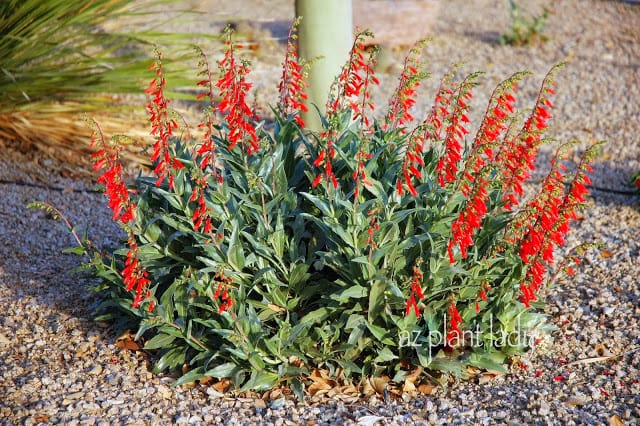
Firecracker Penstemon (Penstemon eatoni), blooms in late winter and into spring in my zone 9a garden.
Some of my favorite plants in my garden are those that bloom in fall, winter or spring.
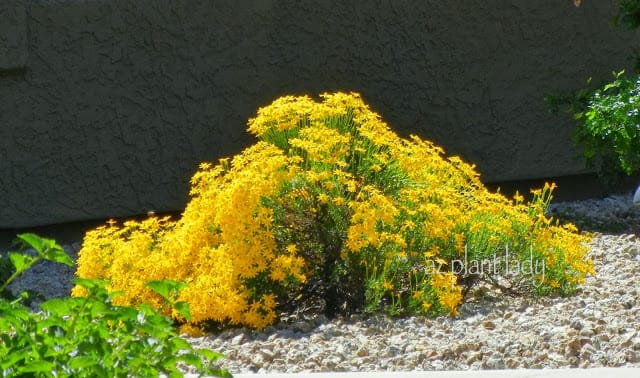
Damianita (Chrysactinia mexicana), blooms in spring and fall.
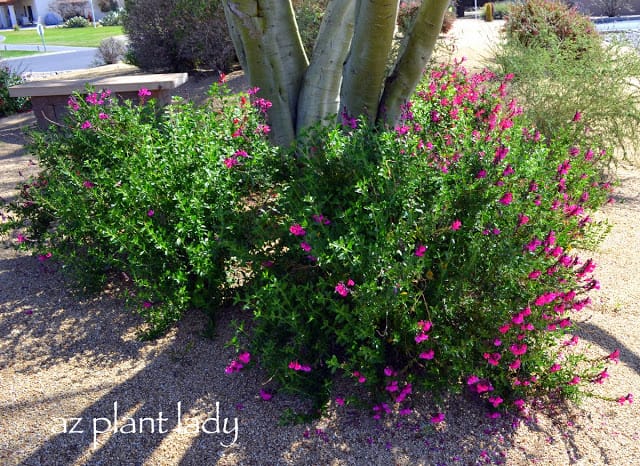
Pink Autumn Sage (Salvia greggii ‘Pink’), blooms fall, winter and spring and prefers partial shade.
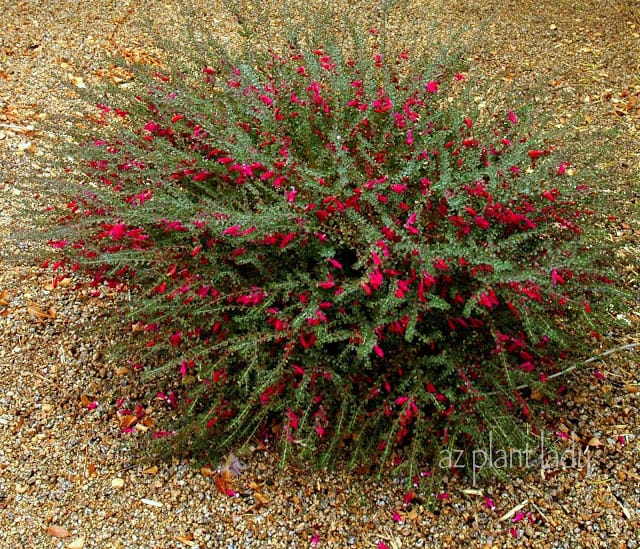
Valentine (Eremophila maculata ‘Valentine), is my FAVORITE shrub. I starts blooming in January and lasts until April when there is not much else going on in my garden.
When shopping for arid-adapted plants for your landscape, be aware that most of them aren’t too impressive looking when seen at the nursery.
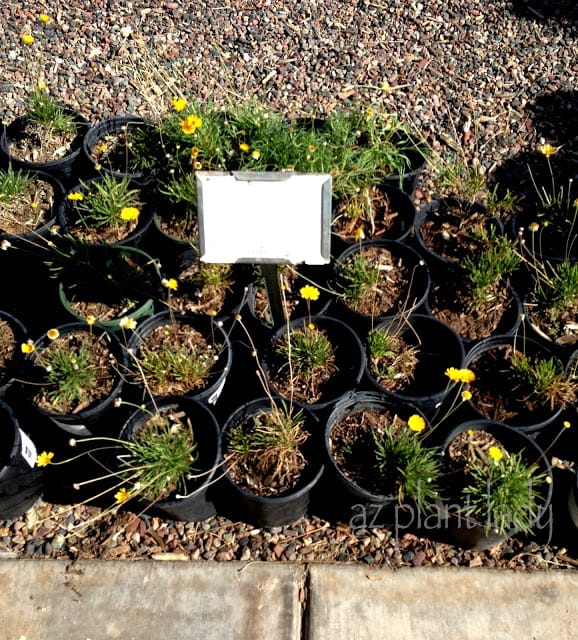
Angelita Daisy in the nursery.
Arid-adapted plants don’t really start concentrating on their top growth UNTIL they have grown a good amount of roots.
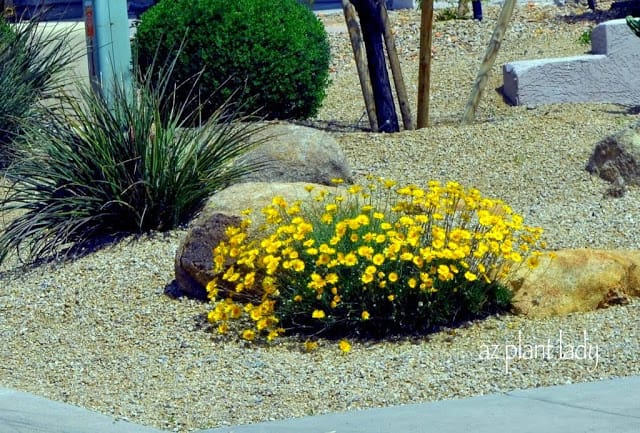
Angelita Daisy (Tetraneuris acaulis, formerly Hymenoxys acaulis)
As you can see, there is a pretty significant difference after these Angelita Daisies have been in the ground for a couple of years.
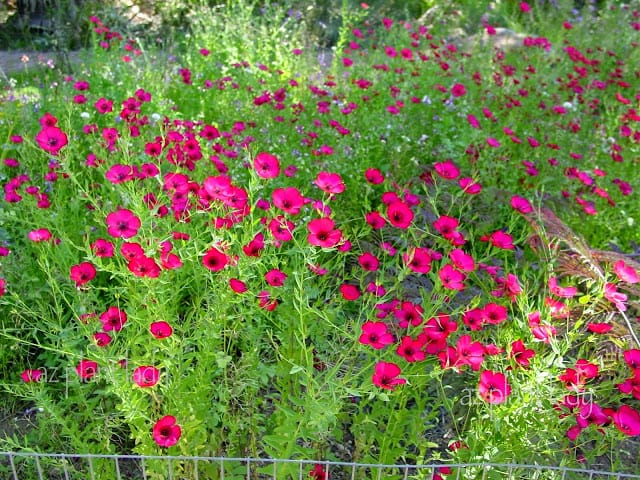
Scarlet Flax
Do you like wildflowers? For a beautiful spring display, October is the time to spread wildflower seed. Growing your own wildflowers is easy to do, but there are a few important guidelines to follow. You can read more about how to start your own wildflowers from seed here.
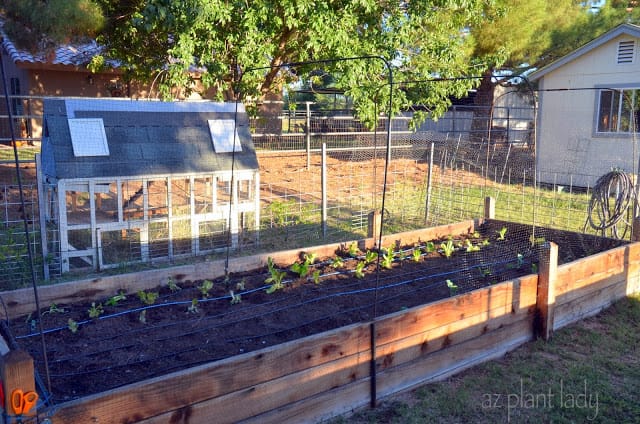
If you enjoy growing vegetables, then it is time to get started planting cool-season vegetables such as broccoli, cabbage, carrots, cauliflower, garlic, leaf lettuce and radishes – just to name a few.

I amend my soil with 3 inches compost, 2 inches composted steer manure, blood meal and bone meal (following the directions on the package on how much to apply). Lightly cultivate, mixing your new amendments into the soil.

Our little puppy, Penny, is growing up!
*Beware of 4-month old puppies when adding manure, blood or bone meal to your garden. It is absolutely irresistible to them and dogs of all ages 😉
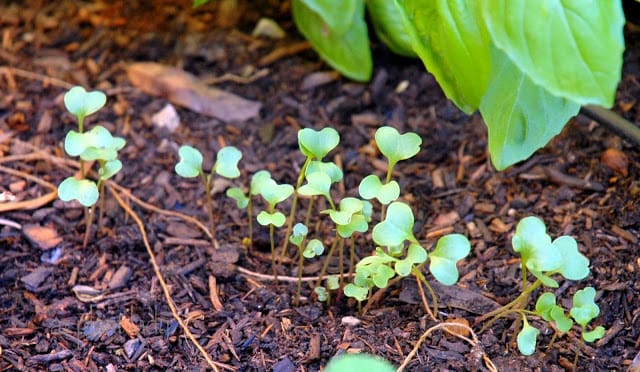
Radish seedlings.
As your seedlings come up, there will be too many growing too close together, so you will need to thin them once they have 2 – 3 mature leaves (not the small seed leaves).
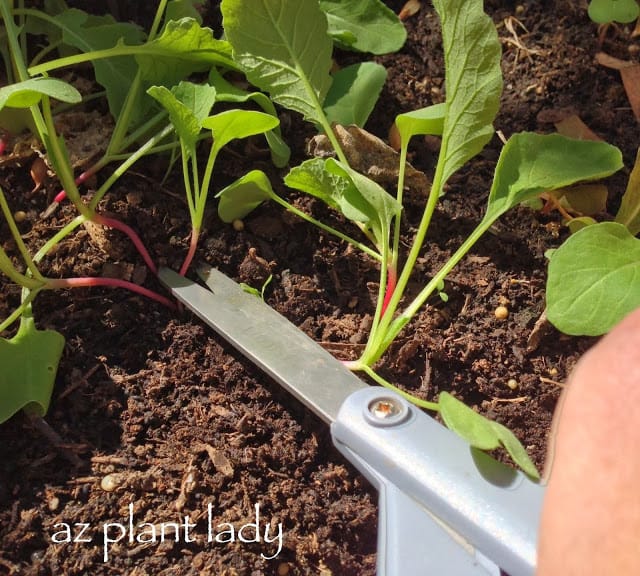
The easiest way to thin excess seedlings is to simply cut them off with scissors. Pulling them out can injure the roots of the remaining plants.

Lettuce seedlings that were thinned.
Don’t throw out your leaf lettuce and radish greens that you have thinned out. Use them to garnish you salad – they are delicious!
Check out your local county extension office’s website for information on when and what to plant in your area this month. For the greater Phoenix area, here is a wonderful vegetable planting calendar
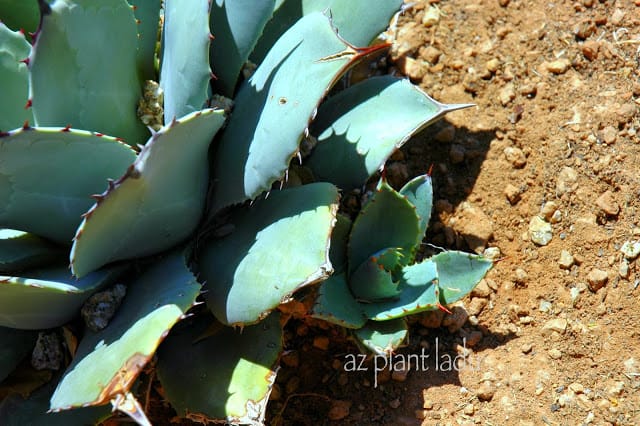
Do you have a favorite agave growing in your landscape? Some agave produce volunteers (also called offsets or pups). October is a great time to propagate succulents like agave or cacti.
I have a favorite Parry’s Agave in my garden and it occasionally produces a little baby, which I take and replant elsewhere in my garden or give to a friend. It is easy to transplant the baby agave and you can see how I do it, here.
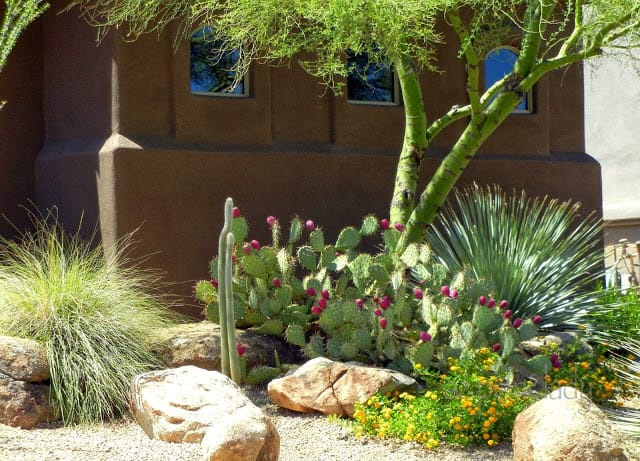
As temperatures begin to cool, plants do not need as much water as they do in summer. Adjust your irrigation schedule so that you are water less frequently.
The length of time that you water, should remain the same. Trees should be watered to a depth of 3 feet, shrubs to 2 feet and perennials to 1 foot. For watering guidelines and schedules, click here.
I love container gardening. It is an easy way to change up the look of your landscape seasonally and year to year.
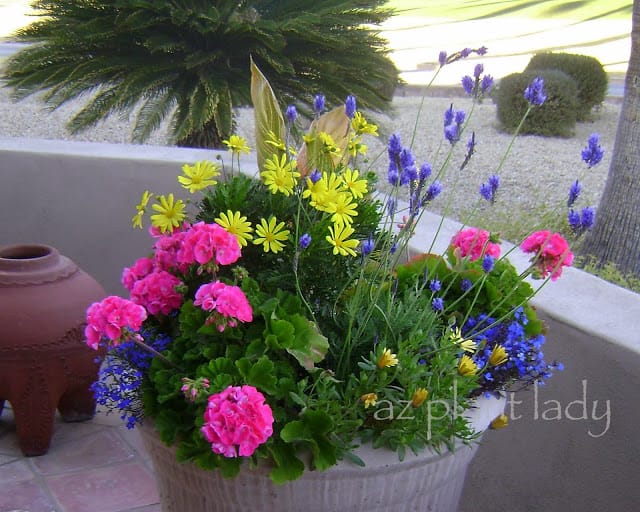
Container with geraniums, yellow Euryops daisies, fern leaf lavender and blue lobelia.
Switch out your warm-season container plantings for cool-season favorites. Alyssum, geraniums, lobelia, pansies, petunias, snapdragons and violas are just a few colorful plants that can be added to your containers in October.
Add 6 inches of new potting mix (I like to use a planting mix, which is a little different then potting soil and avoids problems with wet soil) to each container before planting to replenish the old soil.
After adding your new plants, then sprinkle a slow-release fertilizer around the base of each plant, which will slowly release nutrients for about 3 months.
In addition to your traditional flowering containers, how about changing up your containers?

My granddaughter, Lily, is handling her watering duties very seriously. I just think her little painted toenails are so cute!
We planted this container filled with herbs and gave it to my oldest daughter for her birthday. Chives, parsley, rosemary and thyme will handle our winters just fine and fresh herbs are just a few steps away from her kitchen.
My newest addiction is growing vegetables and flowers together in containers.
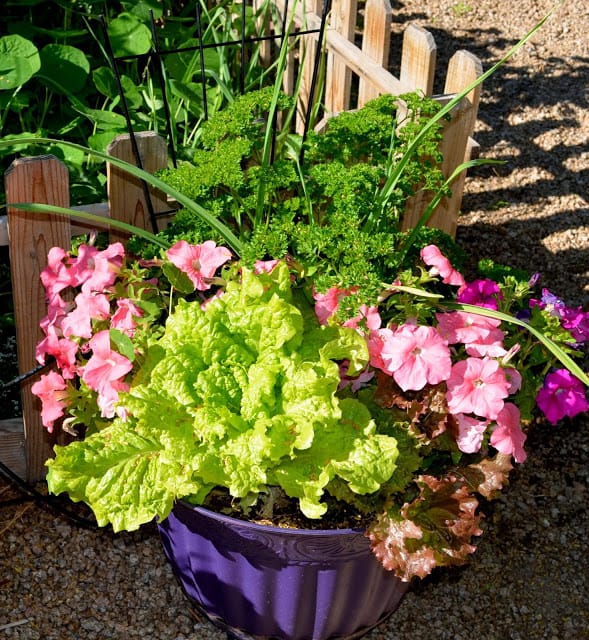
Petunias grow among parsley, garlic and leaf lettuce in front of my vegetable garden.
I have almost more fun growing vegetables in containers then I do in my vegetable gardens.
There are many types of vegetable that do well in containers, including leaf lettuce and garlic. For more ideas of how to grow vegetables and flowers together, click here.
**I also made a video about growing a summer vegetable and flower container. You can view it here.
Well, I think that I have given you a fair amount of task to do in your garden.
What type of gardening tasks are you doing in your garden this month? I would really love to hear about it.
I will post another “To-Do” List next month!

 Noelle Johnson, aka, 'AZ Plant Lady' is a author, horticulturist, and landscape consultant who helps people learn how to create, grow, and maintain beautiful desert gardens that thrive in a hot, dry climate. She does this through her consulting services, her online class Desert Gardening 101, and her monthly membership club, Through the Garden Gate. As she likes to tell desert-dwellers, "Gardening in the desert isn't hard, but it is different."
Noelle Johnson, aka, 'AZ Plant Lady' is a author, horticulturist, and landscape consultant who helps people learn how to create, grow, and maintain beautiful desert gardens that thrive in a hot, dry climate. She does this through her consulting services, her online class Desert Gardening 101, and her monthly membership club, Through the Garden Gate. As she likes to tell desert-dwellers, "Gardening in the desert isn't hard, but it is different."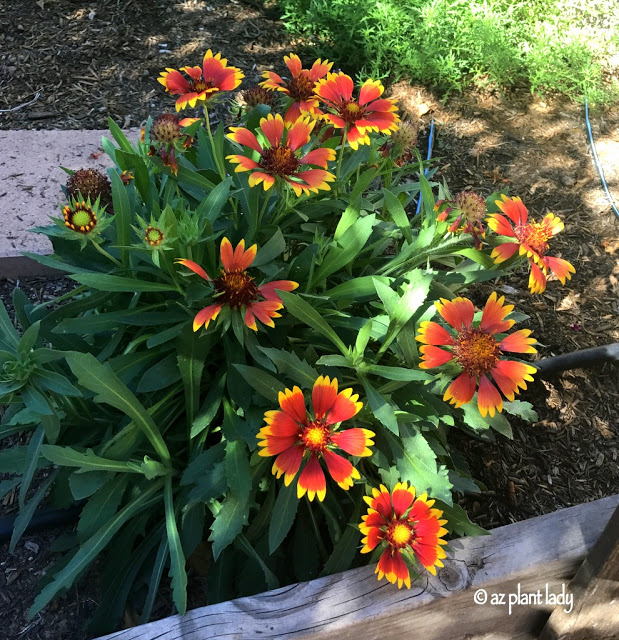
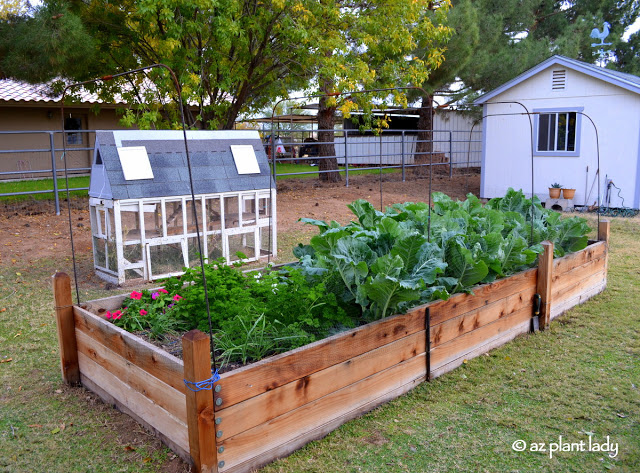
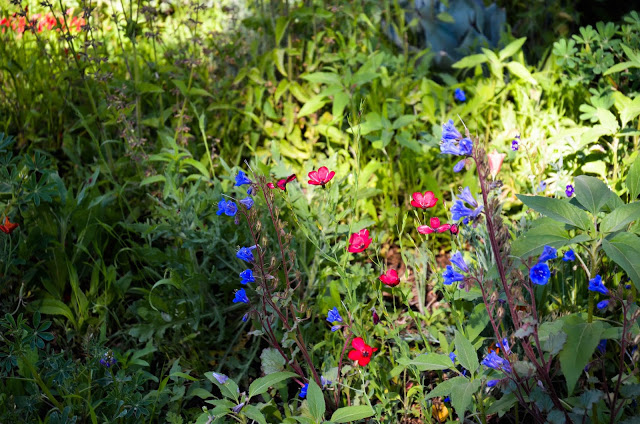
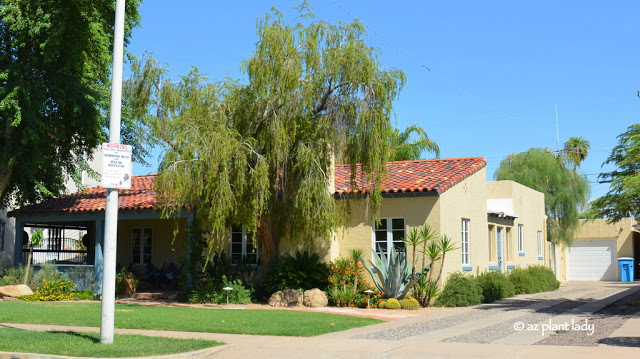

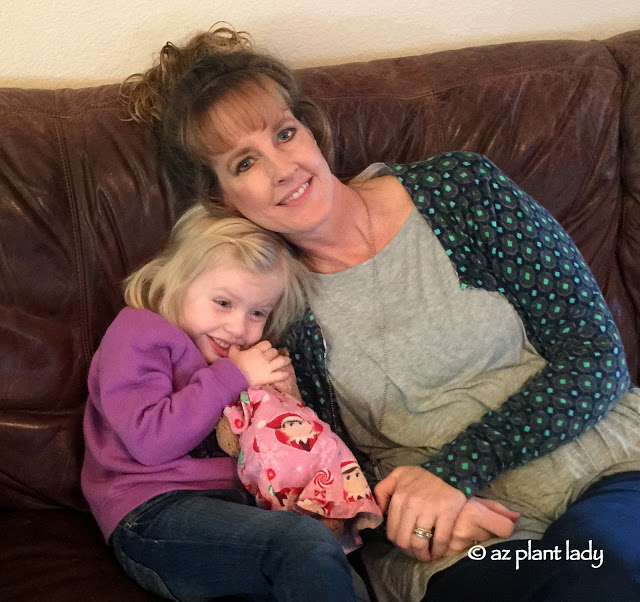








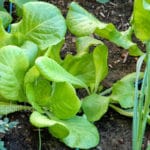
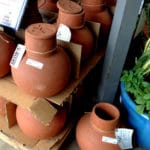
I get the same excitement with a light sweater! 🙂
I like your recc. plants so much, Noelle. Thanks for always sharing those. I have yet to see that Valentine shrub….but I will keep my eyes open!
Great containers !!!!!!!!!!
Loved this post, thanks for all the great tips!
I always enjoy my visits to your blog – and a chance to be out your way. Must be nice to walk outside in the morning as you say and the temperatures are in the 80s. Here we have 40s. Not as nice as 80s in my mind! Jack
Looks lovely! Just curious what to do about starting a garden where we currently have bermuda grass. Any suggestions? Thanks, deb
Hello,
Thank you so much for your kind comments!
Believing Wifey – my friend, Jill, wrote a great blog post about how they added vegetable beds. You can read more here – http://www.sweetlifegarden.com/2013/07/gardening-in-box.html
Good Luck!
Noelle